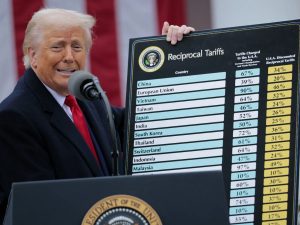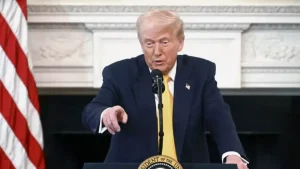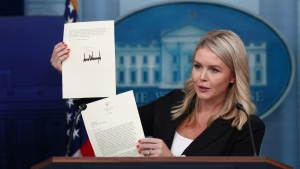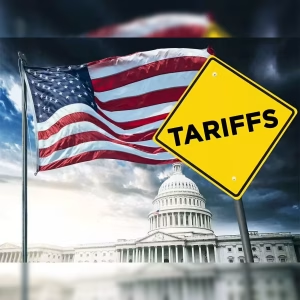Washington D.C. – The United States has entered a new phase of aggressive trade policy as President Donald Trump unveiled comprehensive tariff measures targeting 14 countries worldwide. These Donald Trump new tariffs represent one of the most significant trade actions in recent memory, with rates reaching as high as 40 percent on select nations. The announcement, made through official letters shared on Truth Social, signals a dramatic escalation in America’s approach to international commerce.
The timing of these measures is particularly significant, with implementation scheduled for August 1, 2025. This strategic timing allows businesses and trading partners minimal preparation time, reflecting the administration’s determination to swiftly address what it perceives as unfair trade practices that have persisted for years.
Highest Tariff Rates Target Southeast Asian Nations

Among the most severely impacted countries are Myanmar and the Lao People’s Democratic Republic, both facing the maximum 40 percent tariff rate under the new Donald Trump new tariffs framework. These rates represent the highest levels imposed in the current round of trade measures, signaling particular concern about trade relationships with these Southeast Asian nations.
The selection of Myanmar and Laos for the highest rates appears strategic, as both countries have been subject to various international sanctions and trade restrictions. The 40 percent rate effectively creates substantial barriers to imports from these nations, potentially reshaping supply chains and forcing American businesses to seek alternative sources.
Major Asian Economies Face Substantial Impact
Japan and South Korea, two of America’s most significant trading partners in Asia, were among the first countries named in the Donald Trump new tariffs announcement. Both nations face a 25 percent levy, a substantial increase that could significantly impact bilateral trade relationships that have been carefully cultivated over decades.
The inclusion of these traditionally allied nations in the tariff measures has raised questions about the administration’s broader strategic objectives. White House press secretary Karoline Leavitt addressed these concerns, stating that the selection was “the president’s prerogative” and that these were simply “the countries he chose.”
Also Read: Netanyahu Nominate Trump for Nobel Peace Prize: Powerful Peace Recognition Unfolds
Comprehensive List of Affected Nations
The Donald Trump new tariffs encompass a diverse range of countries across multiple continents, each facing varying rates based on undisclosed criteria. Bangladesh faces a 35 percent tariff, while Bosnia and Herzegovina confronts a 30 percent rate. Cambodia and Thailand both encounter 36 percent tariffs, indicating particular focus on Southeast Asian trade relationships.
Indonesia, a major emerging economy, faces a 32 percent tariff under the new measures. Kazakhstan and Malaysia both confront 25 percent rates, similar to Japan and South Korea. The Republic of Serbia faces a 35 percent tariff, while Tunisia encounters a 25 percent rate. South Africa, representing the African continent, faces a 30 percent tariff.
Economic Justification and National Security Concerns


The Donald Trump new tariffs are justified by the administration as necessary corrections to years of unfair trade practices. Official letters sent to affected countries emphasized that these measures address “many years of tariff and non-tariff policies and trade barriers” that have resulted in “unsustainable trade deficits against the United States.”
The administration has framed these trade deficits as more than economic concerns, describing them as “a major threat to our economy and indeed our national security.” This national security justification provides broader legal authority for the tariff measures and suggests a long-term strategic approach to trade policy restructuring.
Warning Against Retaliatory Measures

A particularly noteworthy aspect of the Donald Trump new tariffs announcement involves explicit warnings against retaliatory measures. The official letters contained clear language stating that any country choosing to raise their tariffs in response would see those increases “added onto the tariffs that we charge.”
This preemptive warning against retaliation demonstrates the administration’s anticipation of potential trade conflicts and its readiness to escalate measures further if necessary. The approach suggests a willingness to engage in sustained trade disputes to achieve desired outcomes.
Market Uncertainty and Business Impact
The announcement of these Donald Trump new tariffs has created significant uncertainty in global markets and among businesses that rely on international supply chains. The frequency of tariff changes under the current administration has made it increasingly difficult for companies to plan for production, inventory management, and hiring decisions.
This uncertainty extends beyond immediate business operations to broader economic planning. Companies must now factor in potential tariff escalations when making long-term strategic decisions, fundamentally altering how international business relationships are structured and maintained.
Ongoing Trade Negotiations

Despite the aggressive nature of these Donald Trump new tariffs, the administration has indicated that negotiations continue with various trading partners. Press secretary Leavitt noted that the administration is “close” to finalizing agreements with several other trading partners, suggesting that some countries may avoid or reduce tariff exposure through bilateral negotiations.
The president’s stated desire to ensure these are “the best deals possible” indicates a transactional approach to trade policy, where tariff threats serve as negotiating tools rather than permanent policy positions.
Global Trade Implications
The implementation of these Donald Trump new tariffs extends far beyond bilateral trade relationships to impact global supply chains and international commerce patterns. Countries not directly affected by the measures may experience indirect benefits as businesses seek alternative sourcing options.
Future Trade Policy Direction
As the August 1 implementation date approaches, the Donald Trump new tariffs represent a clear signal of the administration’s commitment to reshaping America’s trade relationships through aggressive policy measures. The scope and scale of these tariffs suggest this is merely the beginning of a broader trade policy transformation that could fundamentally alter global commerce patterns for years to come.
The success or failure of these measures will likely determine the trajectory of future trade policy and America’s relationships with key trading partners worldwide.

